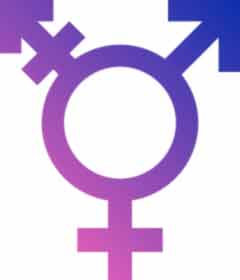 As those of you who follow us know, we are strong advocates of intercultural competence which, in part, means acquiring knowledge about other groups. I was heartened to see the objective coverage on transgender individuals last week when Bradley Manning announced he would undergo gender reassignment.
As those of you who follow us know, we are strong advocates of intercultural competence which, in part, means acquiring knowledge about other groups. I was heartened to see the objective coverage on transgender individuals last week when Bradley Manning announced he would undergo gender reassignment.
USA Today and other media carried several objective and informative pieces that were helpful in advancing our knowledge about an area that even the experts admit, we know too little about.
The first step to competence is getting the facts that begin to challenge our stereotypes and misinformation.
Here are some key facts.
What is the definition of transgender: The American Psychological Association defines “transgender” as an “umbrella term for persons whose gender identity, gender expression, or behavior does not conform to that typically associated with the sex to which they were assigned at birth.”
However, people whose gender identity differs from their assigned sex at birth may not self-identify as transgender. Others may identify as transsexual, trans, genderqueer, a person of transgender experience, etc. In addition, transgender people may or may not use a different name or pronoun than the one they were assigned at birth, and they may or may not pursue hormone therapy or surgery. If you are not sure, defer to the way the individual self-identifies.
How many people identify as transgender: The Williams Institute, a think tank on sexual orientation and gender identity, estimates that there are almost 700,000 transgender individuals in the US.
Why does transgender fall under the category of mental illness?: Mental health experts agree that with most mental illnesses the goal is to change people’s minds. However with transgendered individuals, the goal is to change their body. “In a typical mental disorder, we try to make those symptoms go away. Here the treatment has emerged to align the person’s body to match their gender identity.” There are efforts underway to change the classification. The new manual of mental disorders changed the diagnostic name from “gender identity disorder” to “gender dysphoria,” which refers to the distress that may be associated with it. The American Psychiatric Association is trying to reduce the stigma associated with being transgender while at the same time assuring that individuals receive the appropriate treatment.
“It’s not called a disorder, but it is in the handbook of mental disorders. The truth is we actually don’t know what it is,” according to a leading mental health expert.
How is sexual orientation different from gender identity?: Sexual orientation describes an individual’s physical, romantic, emotional, and/or spiritual attraction to another person (for example: straight, gay, lesbian, bisexual). Gender identity is someone’s personal sense of their own gender (for example: male, female).
Experts say that coming out as transgender is very different from coming out as gay. The emotional process of receiving a son who was previously a daughter or vice versa can be very traumatic.
From a workplace perspective, I remember an individual at a company for whom I worked in the 70’s undergoing gender reassignment surgery. It was a very rare event at that time. While still not common, I venture that it will be more common in the future and as diversity and inclusion practitioners we need to be prepared to educate!
Sources:
- What ‘transgender’ means, and how society views it (USA Today)
- GLAAD’s Transgender Resources (GLAAD.org)
Image source: Hudson Valley LGBTQ Community Center


















